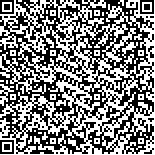孙瑞,李洁,李祖虹,等.经颅磁刺激联合运动疗法对脑卒中后疲劳患者疲劳程度及炎性细胞因子的影响[J].中华物理医学与康复杂志,2019,41(1):23-27
扫码阅读全文

|
| 经颅磁刺激联合运动疗法对脑卒中后疲劳患者疲劳程度及炎性细胞因子的影响 |
|
| |
| DOI:DOI:10.3760/cma.j.issn.0254-1424.2019.01.005 |
| 中文关键词: 经颅磁刺激 脑卒中后疲劳 细胞因子 疲劳程度 运动疗法 |
| 英文关键词: Transcranial magnetic stimulation Post-stroke fatigue Cytokine Fatigue Exercise therapy |
| 基金项目: |
|
| 摘要点击次数: 6668 |
| 全文下载次数: 7423 |
| 中文摘要: |
| 目的 观察经颅磁刺激联合运动训练对脑卒中后疲劳(PSF)患者疲劳程度及白介素-1β(IL-1β)、IL-9、IL-10、肿瘤坏死因子-α及C反应蛋白(CRP)的影响。 方法 采用随机数字表法将90例PSF患者分为观察组及对照组,每组45例。2组患者均给予常规运动训练,观察组在此基础上辅以经颅磁刺激治疗。于治疗前、治疗4周、治疗8周时分别采用简式Fugl-Meyer运动功能量表(FMA)、疲劳严重程度量表(FSS)对2组患者肢体运动功能及疲劳缓解情况进行评定,同时于上述时间点检测2组患者血清中IL-1β、IL-9、IL-10、TNF-α及CRP含量,并对患者肢体运动功能、疲劳改善程度与炎性细胞因子水平进行相关性分析。 结果 治疗前2组患者IL-1β、IL-9、IL-10、TNF-α及CRP水平组间差异均无统计学意义(均P>0.05);治疗4周及治疗8周后观察组患者FMA评分及疲劳改善程度均显著优于对照组水平(均P<0.05);并且治疗后观察组患者血清中IL-1β、IL-9、IL-10、TNF-α及CRP水平均较对照组明显降低(均P<0.05)。通过Pearson相关性分析发现,患者肢体FMA评分与血清中IL-1β、IL-9、IL-10、TNF-α及CRP水平具有负相关性(P<0.05),FSS评分与血清中IL-1β、IL-9、IL-10、TNF-α及CRP水平具有正相关性(P<0.05)。 结论 经颅磁刺激联合运动疗法能明显改善PSF患者运动功能及疲劳程度,其治疗机制可能与降低患者血清中IL-1β、IL-9、IL-10、TNF-α及CRP水平有关。 |
| 英文摘要: |
| Objective To observe the effects of transcranial magnetic stimulation combined with exercise training on fatigue and interleukin-1β (IL-1β), interleukin-9, interleukin-10, tumor necrosis factor-α and C-reactive protein (CRP) in patients with post-stroke fatigue (PSF). Methods A total of 90 patients with post-stroke fatigue were recruited and randomly divided into an observation group and a control group. Both groups were given routine exercise training, and the observation group was treated with transcranial magnetic stimulation in addition. Simplified Fugl-Meyer Motor Function Scale (FMA) and Fatigue Severity Scale (FSS) were used to assess the motor function of the limbs and fatigue of the two groups before treatment, 4 and 8 weeks after treatment. At the same time, the levels of IL-1β, IL-9, IL-10, TNF-α and CRP in the serum of the two groups were measured at the above time points. The correlation among the motor function, fatigue and cytokine levels was analyzed. Results There was no significant difference in the levels of IL-1β, IL-9, IL-10, TNF-α and CRP between the two groups before treatment (all P>0.05); FMA score and fatigue improvement in the observation group were significantly better than those in the control group after treatment for 4 and 8 weeks (all P<0.05); and serum levels of IL-1β, IL-9, IL-10, TNF-α and CRP in the observation group were significantly lower than those in the control group after treatment (all P<0.05). Pearson correlation analysis showed that FMA scores of limbs were negatively correlated with serum levels of IL-1β, IL-9, IL-10, TNF-α and CRP (P<0.05), and FSS scores were positively correlated with serum levels of IL-1β, IL-9, IL-10, TNF-α and CRP (P<0.05). Conclusion Transcranial magnetic stimulation combined with exercise therapy can significantly improve the motor function and ameliorate fatigue of PSF patients. The therapeutic mechanism may be related to the reduction of serum levels of IL-1β, IL-9, IL-10, TNF-α and CRP. |
|
查看全文
查看/发表评论 下载PDF阅读器 |
| 关闭 |
|
|
|